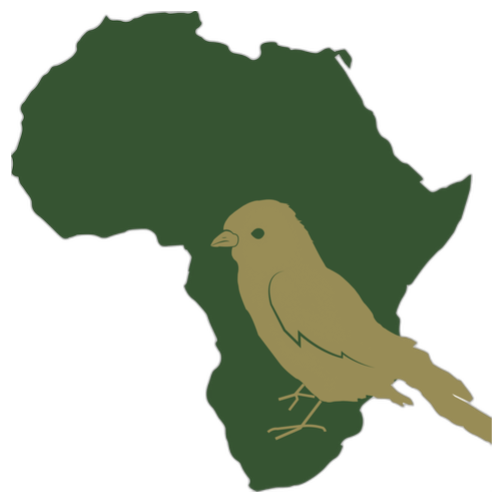The Wildebeest Migration: Nature's Greatest Show or a Marketing Mirage?
- Shrike Safaris

- Apr 30
- 4 min read
Let’s cut through the fluff.
You've heard it a hundred times before:
"The Great Wildebeest Migration is the greatest show on earth."
Sounds romantic, right?
But here’s what nobody tells you—behind the sweeping drone shots and Insta-perfect safari reels is a dynamic, chaotic, and often brutal cycle that’s as much about strategy and survival as it is about spectacle.
At Shrike Safaris, we don't do cookie-cutter safaris.
We dive deep—into nature’s rhythms, the historical patterns, and yes, even the human missteps of poorly planned trips.
Because the migration?
It doesn’t run on our schedule.
And that's where 99% of safari planners go wrong.

If witnessing millions of wildebeest, zebras, and gazelles thundering across the plains of East Africa is on your bucket list — this is the blog you’ve been searching for.
What's Really Going On?
Every year, nearly two million wildebeest, zebras, and gazelles move in a continuous, clockwise loop across Tanzania’s Serengeti and into Kenya’s Maasai Mara.
It’s an ancient ritual dictated by rain, grass, and survival—not by glossy brochures.
Along the way, they birth calves, outrun predators, cross crocodile-infested rivers, and face exhaustion.
It’s life. Raw, unfiltered, and uncurated.
Yet most safari companies still sell the same predictable pitch:
"Come in July for the river crossing!"
Here's the reality—even during peak season, the Mara River crossing is never guaranteed.
The herds may delay.
Or they may cross at night.
Worse, you could be a few valleys away.
That’s why we at Shrike Safaris designed a smarter, more agile approach—mobile, multi-location safaris that follow the rhythm of the herds, not the calendar.
Strategic Hotspots — And When to Go
Let’s map the migration through Tanzania like a strategist, not a tourist.
Southern Serengeti & Ndutu Plains (Jan–Mar)
Central Serengeti & Western Corridor (Apr–Jun)
Grumeti River Crossings (Jun–early Jul)
Northern Serengeti & the Mara River (Jul–Oct)
Eastern Serengeti & the Return South (Oct–Dec)
1. Southern Serengeti & Ndutu Plains (Jan–Mar) — Calving Season
New life, big drama, fewer crowds.
Welcome to the nursery.
During calving season, over 500,000 calves are born in a matter of weeks on the open plains.
This is the start of the cycle—and a magnet for lions, cheetahs, and hyenas.
What makes Shrike different?
We offer exclusive access to quiet corners of Ndutu and Maswa, where the action is close — and the crowds are far away.
2. Central Serengeti & Western Corridor (Apr–Jun)
Green season magic.
As the long rains taper off, the herds begin fanning out toward the central Serengeti and eventually into the western corridor.
It’s not just about where they’re going—it’s about what you see on the way.
The Seronera region is home to year-round predators and some of the Serengeti’s last remaining black rhinos.
The volcanic Moru Kopjes offer more than scenery: they hold Maasai cave paintings and the eerie gong rocks once used to communicate across plains.
Shrike Advantage:
Our guides take you beyond the wildlife — to hidden rock art, cultural stories, and secret valleys other operators overlook.
Grumeti River Crossings (Jun–early Jul)
Crocodiles, crossings, and quiet camps.
The herds face their first major river challenge.
Western Serengeti offers thrilling sightings — with fewer vehicles.
Great time for intimate safari experiences.
Shrike Advantage:
We work with off-grid mobile camps and boutique lodges tucked away from the main traffic — so the drama unfolds right in front of you.
4. Northern Serengeti & the Mara River (Jul–Oct)
Peak migration. Peak drama.
Ah yes—the iconic river crossing.
The drama. The chaos.
The crocodiles.
But here's the kicker: only about 40% of travelers actually witness it.
We play the numbers differently.
We base our clients in Kogatende and Lamai—the less crowded side of the river—because we believe in maximizing your odds and minimizing your stress.
And we do what others won’t:
Plan alternative action spots like the Ikorongo Game Reserve, so you're not left empty-handed if the migration shifts.
5. Eastern Serengeti & the Return South (Oct–Dec)
Quiet season, wild beauty.
As the migration loops south, most operators pack up.
But Shrike Safaris leans in.
This is the time for exclusive, low-season rates, big cat sightings around Gol Kopjes, and lesser-known gems like Lake Natron—a surreal flamingo breeding ground beneath the active volcano Ol Doinyo Lengai.
Want to climb it?
We’ll make it happen.
Kenya vs. Tanzania: The Brutal Truth
Kenya’s Maasai Mara gets all the tourist love—cheap flights, lower prices, more camps.
But you know what else it has?
Crowds. Lots of them.
In the Mara, 30 jeeps could be surrounding one lion.
In Tanzania’s Serengeti?
You could spend the entire day and spot just as much wildlife with zero traffic jams.
Yes, Tanzania safaris can cost more.
But the value of solitude, immersion, and exclusivity is priceless.
That’s why Shrike Safaris isn’t chasing volume—we’re curating legacy experiences for those who want more than a checklist.
Here’s Why Shrike Safaris Is Incomparable
We don't follow the herd. We follow the herds.
Data-Driven Itineraries: We use real-time wildlife reports and historical migration patterns to tailor your trip.
Mobile Camps & Strategic Bases: Unlike static safaris, we position you where the action actually is.
Cultural & Conservation Integration: Want to walk with the Masai people? Hike Lengai? Visit Olduvai Gorge with an archaeologist? That’s our playground.
No Middlemen. No Surprises. You deal directly with our Tanzania-based team—experts, not agents.
Ready to Plan Smarter?
The migration isn’t just a journey of animals—it’s a test of strategic travel planning. You can gamble and hope to catch it…
Or you can go with a team that thinks like a tracker, moves like a local, and guides like a historian.
Let Shrike Safaris plan your migration safari—flawlessly.
Let’s map your journey through the chaos with clarity.
Catch me at info@shrikesafaris.org
Or feel free to WhatsApp me directly at:
+1 (888) 845-8776 — whatever’s easier.

Comments